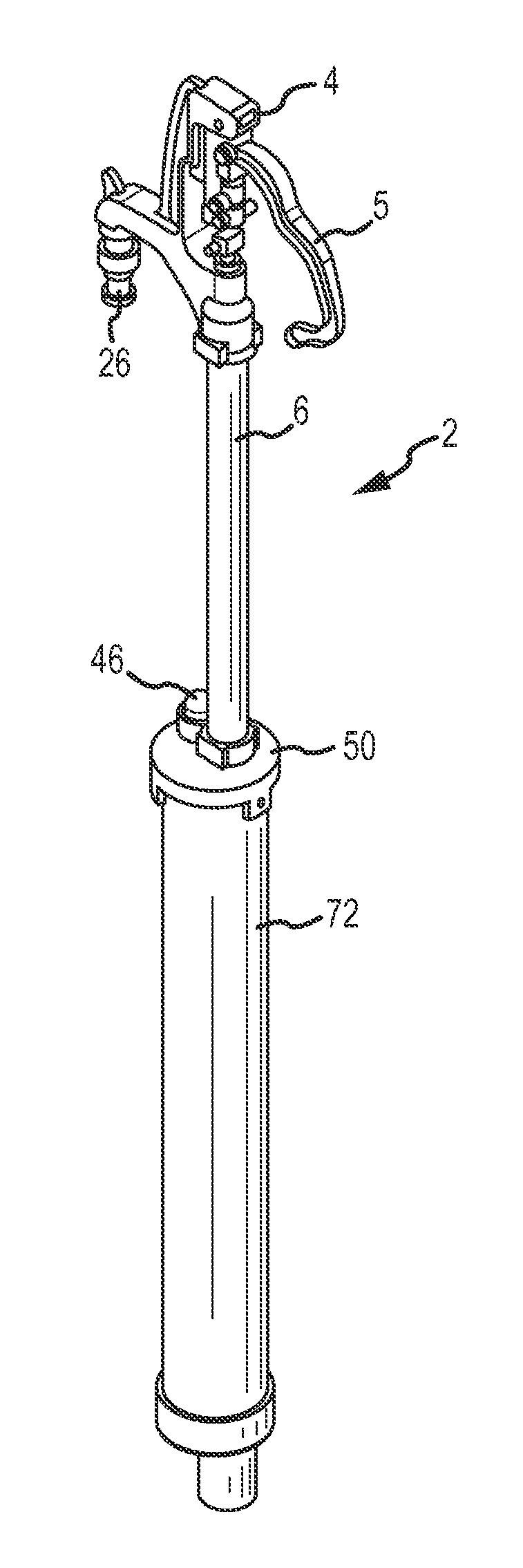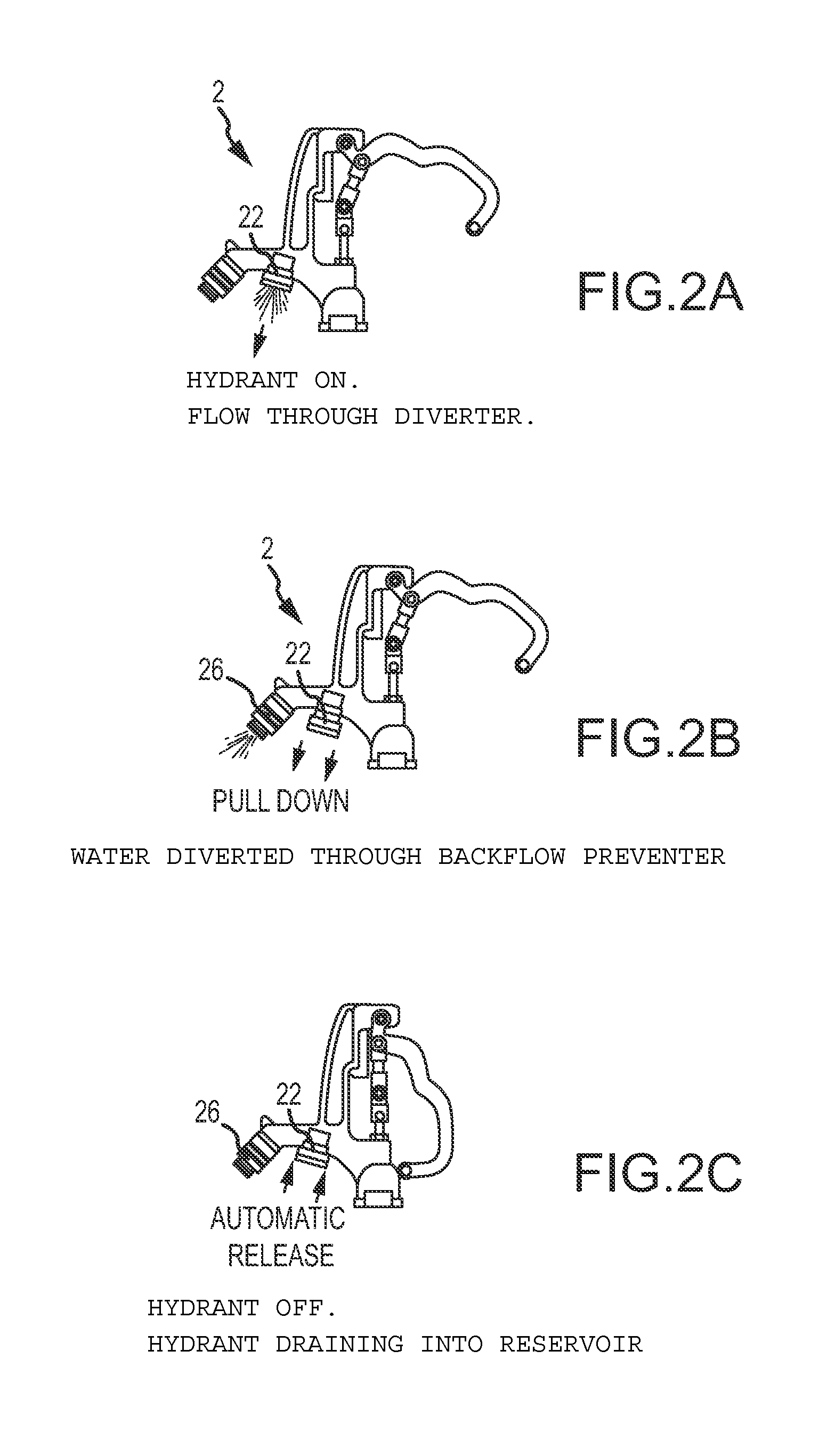Sanitary hydrant
a sanitary hydrant and hydrant body technology, applied in the direction of water supply installation, drawing-off water installation, transportation and packaging, etc., can solve the problems of not having the desired mass flow rate, affecting the operation of the venturi, and optimizing the flow characteristics, so as to facilitate fluid flow, reduce back pressure, and facilitate the effect of fluid flow
- Summary
- Abstract
- Description
- Claims
- Application Information
AI Technical Summary
Benefits of technology
Problems solved by technology
Method used
Image
Examples
Embodiment Construction
[0042]The venturi 18 and related components used in the hydrants of the prior art is shown in FIGS. 3 and 4 and functions when the hydrant issued in conjunction with a vacuum breaker and a diverter. The diverter is needed to allow the venturi to work properly in light of the flow obstructions associated with the vacuum breaker. A typical on / off cycle for this hydrant (see also FIG. 2) requires that the user open the hydrant to cause water to exit the diverter 22 and not the vacuum breaker 26. As the water flows out of the diverter 22, a vacuum is created that draws water through a siphon tube 30 and check valve 34, which evacuates the reservoir (not shown). Flowing water through the diverter 22 for about 30 to 45 seconds will generally evacuate the reservoir. Next, as shown in FIG. 2, the diverter 22 is pulled down to redirect the water out of the vacuum breaker 26. The vacuum breaker 26 allows the hydrant 2 to be used with an attached hose and / or a spray nozzle as the vacuum breake...
PUM
 Login to View More
Login to View More Abstract
Description
Claims
Application Information
 Login to View More
Login to View More - R&D
- Intellectual Property
- Life Sciences
- Materials
- Tech Scout
- Unparalleled Data Quality
- Higher Quality Content
- 60% Fewer Hallucinations
Browse by: Latest US Patents, China's latest patents, Technical Efficacy Thesaurus, Application Domain, Technology Topic, Popular Technical Reports.
© 2025 PatSnap. All rights reserved.Legal|Privacy policy|Modern Slavery Act Transparency Statement|Sitemap|About US| Contact US: help@patsnap.com



